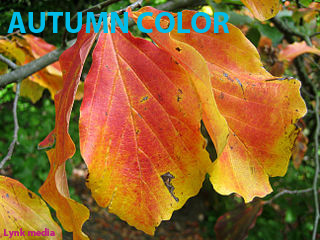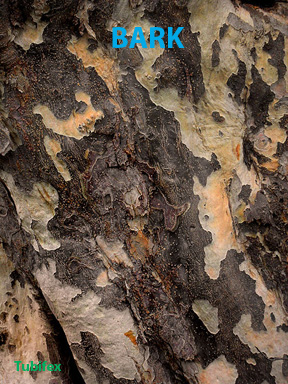
Courtyard Home | Plant Inventory | Spotlight Plants | Fall Color
Spotlight Plants
- Parrotia persica, Persian Ironwood
- Populus smithii, Hybrid Aspen (Populus tremuloides grandidenta)
- Zelkova serrata, Japanese Zelkova
Spotlight Plants
- Parrotia persica, Persian Ironwood
- Populus smithii, Hybrid Aspen (Populus tremuloides grandidenta)
- Zelkova serrata, Japanese Zelkova
⋄ Parrotia persica, Persian Ironwood
Parrotia persica (DC.) C.A. Mey.
Persian Ironwood
[Keim Courtyard, plant source: Faller Landscape and Nursery, York, NE]
persica = Persia = Iran
Authors:
(DC.) = Augustin de Candolle, first described 1830, using specimens collected by Hansen (Hamamelis persica). See Prodromus systematis naturalis regni vegetabilis, sive, Enumeratio contracta ordinum generum specierumque plantarum huc usque cognitarium, juxta methodi naturalis, normas digesta. Augustin Pyramo de Candolle. Paris: Treuttel et Würtz, 1824–73. Vol. 4, 267–70.
C.A. Mey. = Karl Anton von Meyer, 1831, from his collecting in the Caucus (Parrotia persica). First described by this name in Verzeichniss der pflanzen, welche wahrend der in den jahren 1829 und 1830 unternommenen reise im Caucasus und in den provinzen am westlichen ufer des Caspischen meeres gefunden und eingesammelt worden sind (1831), 46–47:
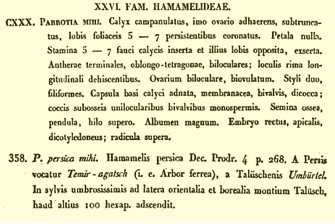
See: http://en.wikipedia.org/wiki/Carl_Anton_von_Meyer
The genus was named for F. W. Parrot (1792–1841), a German/Russian naturalist and traveller:
Journey to Ararat (New York, 1859), 412 pdf pages. Dr. Parrot and Khachatur Abovian made the first modern ascent of Mt. Ararat in 1829. Parrot travelled from Tiflis to Ararat and elsewhere in Armenia and described many aspects of Armenian and Caucasian life, in addition to the climb.
Trip to the Crimea and Caucusus, Reise in die Krym und den Kaukasus, with Moritz von Engelhardt
Cultivated by 1840 in Russia; at Kew Gardens, London, 1841; in U.S. by 1880, Harvard Botanic Garden
RHS Award of Garden Merit
Where to find Parrotia persica in Keim Courtyard:
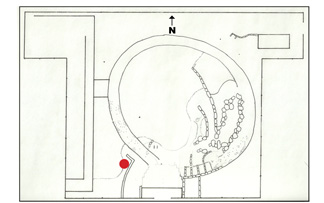
Interesting Points:
⋄ Parrotia persica is a small tree/large shrub whose outstanding characteristics—including incredible fall color and great exfoliating bark—make it a plant that should find a home in more gardens. Although its flowers have no petals, the bright red stamens make an attractive display.
⋄ It is endemic to a very small region: a sliver of land along the southern edge of the Caspian Sea called Hyrcania. The forests of the area are a relict of the tertiary and include a number of interesting species.
Hycania:
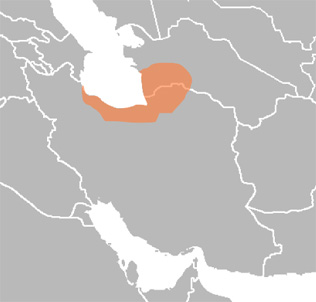

Documentation:
- "Parrotia Persica: An Ancient Tree for Modem Landscapes." Robert G. Nicholson. Arnoldia, Fall 1989, 49:4 (PDF 430 KB)
- "Tree of the Year: Parrotia." Susyn Andrews. International Dendrology Society, Yearbook, 2007. A superb detailed exploration of the tree with a great bibliography for further reading. (PDF 744 KB)
- Hyrcanian Montagne Forest, information from http://www.biome–explorer.net/Montane%20Forest/Hyrcanian%20Montane%20Forest.html
- "Chlorology of the Euxian and Hyrcanian Element in the Woody Flora of Asia." Kazimierz Browicz. In Woody Plants; Evolution and Distribution Since the Tertiary, Proceedings of a Symposium Organized by Deutsche Akademie der Naturforscher Leopoldina. Plant Systemics and Evolution, 1989, 162, 305–314 (PDF 1530 KB)
- Color Plate and Description from Curtis's Botanical Magazine, Comprising the Plants of the Royal Garden Gardens of Kew. Joseph Dalton Hooker. 3rd Series, v. xxiv, Tab. 5744. (PDF 1.2 MB)
- First published description (Hamamelis persica) from Prodromus systematis naturalis regni vegetabilis, sive, Enumeratio contracta ordinum generum specierumque plantarum huc usque cognitarium, juxta methodi naturalis, normas digesta. Augustin Pyramo de Candolle. Paris: Treuttel et Würtz, 1824–73. Vol. 4, 267–70. (PDF 1956 KB)
- "Environmental Change and Evolution of Biota" in "Biomes and Regions of Northern Eurasia: The Caucasus" from Russian Nature, http://www.rusnature.info/reg/15_5.htm (DOCX 168 MB)
- Encyclopedia of Life Parrotia persica page
- Eric's Pet Plant: Persian Ironwood (Parrotia persica). Eric Larson. From "Leslie Land: In Kitchen and Garden and All Around the House." A really nice little essay.
- "Parrotia persica." Paul Williams. Hortus. 92 (Winter 2009), 20–23. (PDF 219 KB)
- "Floral Morphology and the Vascular Anatomy of the Hamameldaceae: The Apetalous Genera of Hamamelidoideae." A. Linn Bogle. Journal of the Arnold Arboretum, 51 (1970). Exerpt regarding Parrotia 337–43. (PDF 6.2 MB)
- "Ornament Plants in their Natural Habitats: Azerbaijan." Information from the Missouri Botanic Garden. (docx 168 KB)
- "Striving for Diversity: Persian Ironwood." Matt Ritter. Pacific Horticulture, January 2012.
- "Phenotypic Variation and Leaf Fluctuating Assymetry in Natural Populations of Parrotia persica (Hamamelidaceae), An Endemic Species From the Hyrcanian Forest (Iran)." Ali Sattarian, Mohammad Reza Akbarian, Mehrdad Zarafshar, Piero Bruschi, Payam Fayyaz. Acta Botánica Mexicana, 97 (2011), 65–81. (PDF 812 KB)
- Plant Diversity of Hyrcanian Relict Forests N Iran: An Overview of the Flora, Vegetation, Palaeoecology and Conservation. Hossein Akhani, Morteza Djamali, Atefeh Ghorbanalizadeh, and Elias Ramezani. Pakistan Journal of Botany, 42 (2010), 231–258. A nice discussion of the relict tertiary age forests.
- "Parrotia persica C.A.M. (Persian witch hazel, Persian ironwood) in the Mazovian (Holsteinian) Interglacial of Poland." Krzysztof Bińka, Jerzy Nitychoruk and Jam Dzierżek. Grana, 42 (2003) 227–233. (PDF 554 KB). A study of ancient pollen grains of Parrotia persica found in Poland.
- "Parrotia persica, Persian parrotia." Edward F. Gilman and Dennis G. Watson. U.S. Forest Service Fact Sheet ST–432, October 1994. (PDF 239 KB)
- "Hyrcania." Information on the name and history of the region from Wikipedia.
- "Caspian Hyrcanian Mixed Forests." Basic information on the region and its flora and fauna from Wikipedia.
- "Central Asia: Northern Iran into southern Azerbaijan." Information on the unique nature of the region from the World Wildlife Fund.
U.S. Forest Sevice Fact Sheet:
USDA hardiness zones: 5 through 8
DESCRIPTION
Height: 20 to 40 feet
Spread: 20 to 35 feet
Crown uniformity: symmetrical canopy with a regular (or smooth) outline, and individuals have more or less identical crown forms
Crown shape: round; vase shape
Crown density: moderate
Growth rate: slow
Texture: fine
Foliage
Leaf arrangement: alternate
Leaf type: simple
Leaf margin: crenate; dentate; serrate
Leaf shape: oblong; obovate
Leaf venation: pinnate
Leaf type and persistence: deciduous
Leaf blade length: 4 to 8 inches; 2 to 4 inches
Leaf color: green
Fall color: orange; red; yellow
Fall characteristic: showy
Flower
RHS: The flowers have no petals, but bright red stamens, borne in dense, spherical clusters, 1cm (0.5in) across, along the branches in late winter and early spring, before the leaves appear.
Flower color: red
Flower characteristics: showy; spring flowering
Fruit
Fruit shape: irregular
Fruit length: < .5 inch
Fruit covering: dry or hard
Fruit color: brown
Fruit characteristics: does not attract wildlife; inconspicuous and not showy; no significant litter problem
Trunk and Branches
Trunk/bark/branches: bark is thin and easily damaged from mechanical impact; routinely grown with, or trainable to be grown with, multiple trunks;
grow mostly upright and will not droop; showy trunk; tree wants to grow with several trunks but can be trained to grow with a single trunk; no thorns
Pruning requirement: needs little pruning to develop a strong structure
Breakage: resistant
Current year twig color: brown
Current year twig thickness: thin
Culture
Light requirement: tree grows in part shade/part sun;
tree grows in full sun
Soil tolerances: clay; loam; sand; slightly alkaline; acidic; well–drained
Drought tolerance: high
Other
Roots: surface roots are usually not a problem
Winter interest: tree has winter interest due to unusual form, nice persistent fruits, showy winter trunk, or winter flowers
Outstanding tree: tree has outstanding ornamental features and could be planted more
Invasive potential: little, if any, potential at this time
Pest resistance: no pests are normally seen on the tree
USE AND MANAGEMENT
These ornamental characteristics and a pest–free nature make Persian Parrotia ideal for use as a
specimen or street tree. Accent the tree in a landscape by setting it off by itself in a lawn or in a bed of low
ground cover. Space 20 to 30 feet apart along a street or walk to create a canopy over the walk. It will not
canopy over the street but will form a wall of wonderful foliage along the sides of a residential
street. This tree should be grown and planted more.
Persian Parrotia should be grown in full sun or partial shade on well–drained, slightly acid soil and
will adapt to alkaline soil provided other cultural requirements are met. Trees will not tolerate wet soil
conditions, but should show considerable drought tolerance once established.
The cultivar –Pendula' reportedly forms a rounded, weeping silhouette, five to six feet high by 10 feet
wide, but is rare in the trade.
Propagation is by seed or cuttings.
Pests and Diseases; No pests or diseases are of major concern. It is virtually pest free
In its first year in the Keim Courtyard, our Parrotia died back to the ground, but it came back in the spring. We'll watch it to see how it fares. A forum member on Dave's Garden web site wrote: "A Parrotia was the first thing I planted at our just built home in 1999. I had wanted one badly and sought out a place to get one long before the house was finished. I had the perfect place for it and did everything by the book to keep it happy. Each growing season it flourished. But each winter it suffered severe die back. It couldn't take my zone 5 winter! Finally In 2007 I gave up and sadly pulled it from the ground."
From Kew, Royal Botanic Gardens (http://apps.kew.org/trees/?page_id=97):
"This small tree from the hills of Iran has almost indestructible wood and an unbeatable array of autumn leaf colours. As an ornamental plant it is virtually unrivalled and is relatively common in British gardens.
Parrotia persica at Kew
Featured Tree
–¢ Date planted: 1981
–¢ Height: 8.1m
Species Information
Place of Origin: Northern Iran to Caucusus
Type: Deciduous and Broadleaf
Family: Hamamelidaceae
Scientific Name: Parrotia persica
As its name suggests, the Persian ironwood tree originates from what used to be called Persia, now modern day Iran. In its native habitat Parrotia persica can grow up to 12m (40ft) in height but in Britain it is often kept as a large bush. Even fully grown specimens retain something of a bush–like quality as they are often as wide as they are tall, and almost pyramidal in shape.
The ironwood descriptor comes from the almost indestructible nature of the tree's timber. Despite, or perhaps because, of this it is not used commercially grown. It seems at first glance to be quite an unassuming little tree. In the early part of the year, sometimes even in January, the flowers of the tree open in a welter of bright red buds before the leaves even appear.
However, it is not until autumn arrives that the real reason for planting Parrotia persica becomes apparent. At this time, the glossy green leaves begin to change colour and a veritable cornucopia of hues appear. Rich crimsons, brilliant yellows and warm ambers fight for attention but in the end always seem to complement each other to form a spectacular autumn sight.
The wood of the Persian ironwood is distinctive, not least because trees often have many twisted, intertwining branches, which increase in number as it ages. The bark can vary in colour from a pinkish–brown to a grey–brown but most intriguingly has a tendency to flake off in large, flat pieces rather like the London plane (Platanus x hispanica).
Further information:
As part of the family Hamamelidaceae, Parrotia persica is a close relative of the witch hazel (Hamamelis). Indeed, the Persian ironwood was previously classified as Hamamelis persica until it was discovered that its flowers do not have petals, as the witch hazel does. The new classification was named after the Russian naturalist FW Parrot, hence Parrotia.
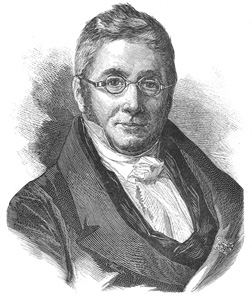
Augustin Pyramus de Candolle
1778–1841
Swiss botanist
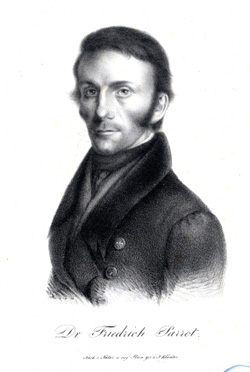
Johann Jacob Friedrich Wilhelm Parrot
(14 October 1792 – 15 January 1841)
Johann Jacob Friedrich Wilhelm Parrot was a German naturalist and traveller, who lived and worked in what was then the Governorate of Livonia, a part of the Russian Empire.
Parrot was born in Karlsruhe. He studied medicine and natural science at the University of Dorpat in present–day Estonia and, in 1811, undertook an expedition to the Crimea and the Caucasus with Maurice Engelhardt. There he used a barometer to measure the difference in sea level between the Caspian Sea and Black Sea.
On his return he was appointed assistant doctor and, in 1815, surgeon in the Russian army. In 1816 and 1817, he visited the Alps and Pyrenees. In 1821, he was professor of physiology and pathology, then in 1826 professor of physics at the University of Dorpat, and in 1828 Parrot undertook another voyage to Kakheti and Armenia.
On 27 September 1829, Parrot, a pioneer of scientific mountaineering, whilst professor of physics of the University of Dorpat, reached the summit of Mount Ararat (5,137 m) with Khachatur Abovian (the Armenian writer and national public figure) and three other students.
Parrot died in Dorpat (Tartu). (http://en.wikipedia.org/wiki/Friedrich_Parrot)
Kingdom Plantae – Plants
Subkingdom Tracheobionta – Vascular plants
Superdivision Spermatophyta – Seed plants
Division Magnoliophyta – Flowering plants
Class Magnoliopsida – Dicotyledons
Subclass Hamamelididae
Order Hamamelidales
Family Hamamelidaceae – Witch–hazel family
Genus Parrotia C.A. Mey. – ironwood
Species Parrotia persica (DC.) C.A. Mey. – Persian ironwood
